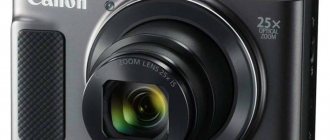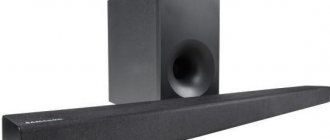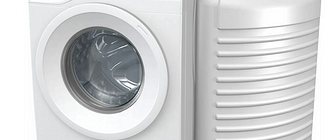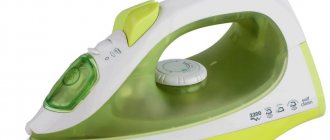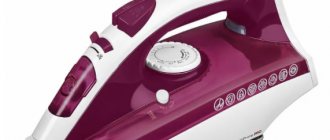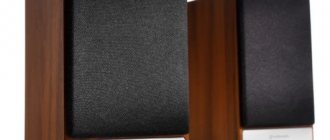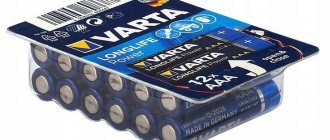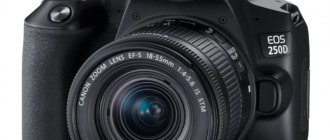| Place | Name | Characteristics in the rating |
| The best mirrorless cameras for hobbyists |
| 1 | Sony Alpha ILCE-6000 Kit | The most popular mirrorless camera |
| 2 | Olympus OM-D E-M10 Mark II Kit | The optimum ratio of price and quality. Optical stabilizer |
| 3 | Canon EOS M50 Kit | A model that is not picky about consumables. Focusing by eyes |
| The best mirrorless cameras for advanced users |
| 1 | Sony Alpha ILCE-6500 Kit | High-quality 5-axis image stabilization |
| 2 | Sony Alpha ILCE-7S Body | Full frame camera |
| 3 | Panasonic Lumix DMC-G7 Kit | Best for Videography |
| The best mirrorless cameras for professionals |
| 1 | Olympus OM-D E-M1 Mark II Kit | High resolution images. Operating speed |
| 2 | Sony Alpha ILCE-A7R III Body | Dual memory card support |
| 3 | Fujifilm X-T20 Body | Best price |
| 4 | Sony Alpha ILCE-7M3 Body | Image quality |
Comparison of the best mirrorless cameras
In the table below I compared the 5 best models that most impressed me with their technical capabilities
| Model | Effective resolution, MP | Weight, g | Viewfinder type | Compatible Lenses | Peculiarities | price, rub. |
| Sony Alpha ILCE-7M3; | 42,4 | 657 | XGA OLED 2.359 million dots | Sony E-mount | The shutter is electronically controlled, vertical stroke (curtain-slot) | 199 990 |
| Nikon Z5; | 24 | 675 | OLED 3.69 million dots | All fast and compact NIKKOR Z lenses | In-camera five-axis image stabilization with up to 5 EV efficiency | 124 990 |
| Fujifilm X-T3 body; | 26,1 | 489 | OLED 3.69 million dots | Body | it is possible to install an additional pad for photographers with large hands; accessory - battery grip to increase the autonomy of the device | 106 990 |
| Panasonic Lumix DMC-G9 | 20,33 | 658 | OLED Live View Finder with 3.68 million dots | Compatible with many lenses | the latest Venus Engine image processor, AR sensor coating that reduces ghosting and flare. | 199 990 |
| Leica TL2 | 24,1 | 399 | Visoflex Typ 020 1.23 million dots | Lenses with Leica L-mount, Leica M/R lenses using Leica M-adapter L/R-adapter L | has versatility in terms of inter-system compatibility | 165 650 |
How to choose the right mirrorless camera?
Mirrorless cameras have become more and more popular in recent years. And this is not surprising, because modern mirrorless cameras are almost in no way inferior to entry-level SLR cameras: they have similar APS-C matrices, high-quality interchangeable lenses, strong and reliable bodies, as well as many professional functions. Moreover, almost any mirrorless camera is much more compact and lighter than its DSLR counterparts. This is achieved by the absence of an optical viewfinder and mirror components. In my opinion, over time, these little ones will be able to almost completely replace DSLRs in the mid-price segment, leaving them with a very small niche for shooting sports competitions and dynamic scenes.
There are now dozens of mirrorless cameras on the market with different prices, and anyone can make a mistake with their choice. How exactly to choose the most suitable model for you? How to avoid overpaying for unnecessary functionality? Or maybe it’s not worth saving? What about optics and accessories? Below I will try to answer all these questions so that you can find the ideal mirrorless camera for yourself and enjoy its performance day after day for many years to come.
Matrix
The matrix is one of the most important elements of modern cameras, including mirrorless ones. Its main characteristic is its area. The larger the area of the matrix, the more light it transmits through itself. In this regard, 35mm full-frame matrices are considered ideal. At the moment, mirrorless cameras are not equipped with full-frame matrices, since installing such a matrix would immediately entail a significant increase in the size of the camera itself. Instead, manufacturers usually use trimmed or “cropped” matrices, their size is indicated either in millimeters or as a coefficient that shows how many times this matrix is smaller than a full-frame one. Each manufacturer tries to use their own developments and matrices: Panasonic and Olympus have created their own Micro Four Thirds standard, while Pentax uses miniature 4.7x-5.6x matrices, and Sony, Canon and many others equip their mirrorless cameras with real APS- C-matrices.
Thus, already at the initial stage you must decide for yourself what is more important: dimensions and weight or the quality of the pictures? Accordingly, the smaller the matrix, the lighter and smaller the camera will be, but it will also shoot a little worse. If both of these parameters are equally important to you, then I advise you to take a closer look at mirrorless cameras with Micro Four Thirds matrices.
Autofocus
Modern DSLR cameras tend to have phase detection autofocus, which does a really good job of capturing objects in the frame correctly and quickly. Unfortunately, due to the design features of such a system, mirrorless cameras are forced to work on a different principle, called contrast autofocus, and its accuracy and speed leave much to be desired. Manufacturers are trying their best to solve this problem, and at the moment the best solution is hybrid autofocus, which combines both phase and contrast autofocus. This approach allows you to achieve significantly more acceptable results compared to conventional contrast autofocus, and therefore it is advisable to give preference to mirrorless cameras that use a hybrid system.
Image stabilization
When choosing a new camera, you should definitely pay attention to the presence of an optical image stabilization system. It allows you to get rid of the movement that occurs due to slight trembling of the hands during shooting. If you plan to use zoom lenses with a long focal length (for example, more than 100 mm), then image stabilization will work in your favor, because the frame will be more stable and clear. In addition, this system will allow you to shoot at longer shutter speeds and at higher ISO sensitivities in low-light conditions.
The stabilization system is usually installed either in the camera itself or in the lenses. In my opinion, it is better to immediately purchase a camera with built-in stabilization, since lenses with this system are much more expensive, and this will help you save a lot, especially if you suddenly want to expand your set of optics with two or three new lenses.
Lenses
One of the most valuable qualities of any mirrorless camera is the ability to seamlessly change lenses depending on the situation. As we found out above, almost every manufacturer tries to use their own matrices, and therefore manufacturers use different lens mounts. In this regard, you will not be able, for example, to use Samsung lenses with Pentax mirrorless cameras and vice versa. Moreover, even within a company, different mounts can be used: Samsung uses both NX and NX-M lenses in its mirrorless cameras. Most likely, you will also not be able to use lenses from SLR cameras, although there are solutions in the form of special adapters. This approach is more suitable for those who already have a DSLR camera with a certain set of lenses.
If you are choosing your first camera, then pay attention to the range of lenses that are directly compatible with your potential choice. Not all manufacturers have a wide selection of lenses: for example, Canon has very few of them - you simply have nowhere to go when you want to expand your capabilities in this way. Meanwhile, Panasonic and Olympus have about two dozen native lenses, and you can definitely find something to suit your tastes.
Flash
If you plan to often shoot in dark rooms or at night, be sure to check that your future camera has a built-in flash. Some mirrorless cameras don't have this feature, and you'll have to carry an external flash with you. This accessory itself is very necessary, because it has more power than the built-in flashes and provides more opportunities. For example, thanks to the rotating design, you can reflect light from the ceiling or walls to create softer lighting. But this approach also has a drawback: you can accidentally forget the flash at home, and then you will have to get sophisticated with viewpoints and camera settings. Most importantly, do not forget to check whether the camera has a hot shoe mount, since most external flashes use this.
Conclusion
You can safely go to the store and buy the most expensive mirrorless camera you see, but you may end up disappointed because an option that is important to you is missing. At the same time, a relatively inexpensive mirrorless camera for 17,000 rubles can have all the necessary functionality, and that is why you should carefully approach the choice of a new camera. Remember - you are not just buying a camera, you are looking for a companion, and if you choose it correctly, you will enjoy its work for many, many years.
Happy shopping!
